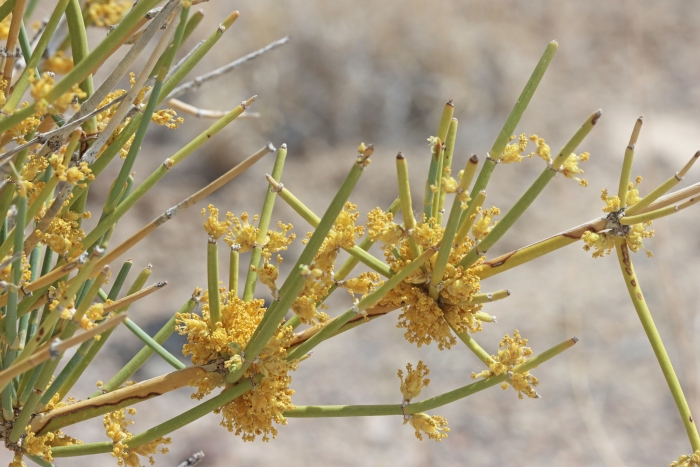Nevada Jointfir
(Ephedra nevadensis)
Nevada Jointfir (Ephedra nevadensis)
/
/

Andrey Zharkikh
CC BY 2.0



































































Estimated Native Range
Summary
Nevada Jointfir is valued for its drought tolerance and is used in water-wise landscaping. It thrives in full sun and requires minimal water once established, making it an excellent choice for low-maintenance gardens. It prefers well-drained soils and is tolerant of poor, sandy, or rocky substrates. In cultivation, it can be used as a ground cover or as an accent plant in rock gardens. It is also of interest for its historical use in traditional medicine, although it should be used with caution due to potential health risks. The plant’s dioecious nature, with male and female plants growing in different moisture regimes, is an evolutionary strategy to optimize seed dispersal. However, gardeners should be aware that Ephedra nevadensis can be slow to establish and may not produce seeds annually.CC BY-SA 4.0
Plant Description
- Plant Type: Subshrub, Shrub
- Height: 2-3 feet
- Width: 3-4 feet
- Growth Rate: Moderate
- Flower Color: N/A
- Flowering Season: Non-Flowering
- Leaf Retention: Evergreen
Growth Requirements
- Sun: Full Sun
- Water: Low
- Drainage: Fast
Common Uses
Drought Tolerant, Edible*Disclaimer: Easyscape's listed plant edibility is for informational use. Always verify the safety and proper identification of any plant before consumption., Low Maintenance
Natural Habitat
native to arid desert regions, often found in sandy soils and rocky slopes in the Great Basin and Mojave Deserts of the Western USA as well as Baja California
Other Names
Common Names: Nevada Mormon Tea, Nevada Ephedra, Mormon-Tea, Gray Ephedra
Scientific Names: , Ephedra nevadensis, Ephedra nevadensis subsp. paucibracteata, Ephedra nevadensis var. nevadensis, Ephedra antisiphylitica, Ephedra nevadensis f. rosea, Ephedra antisyphilitica subsp. pedunculata, Ephedra antisyphilitica var. pedunculata,
GBIF Accepted Name: Ephedra nevadensis S.Watson